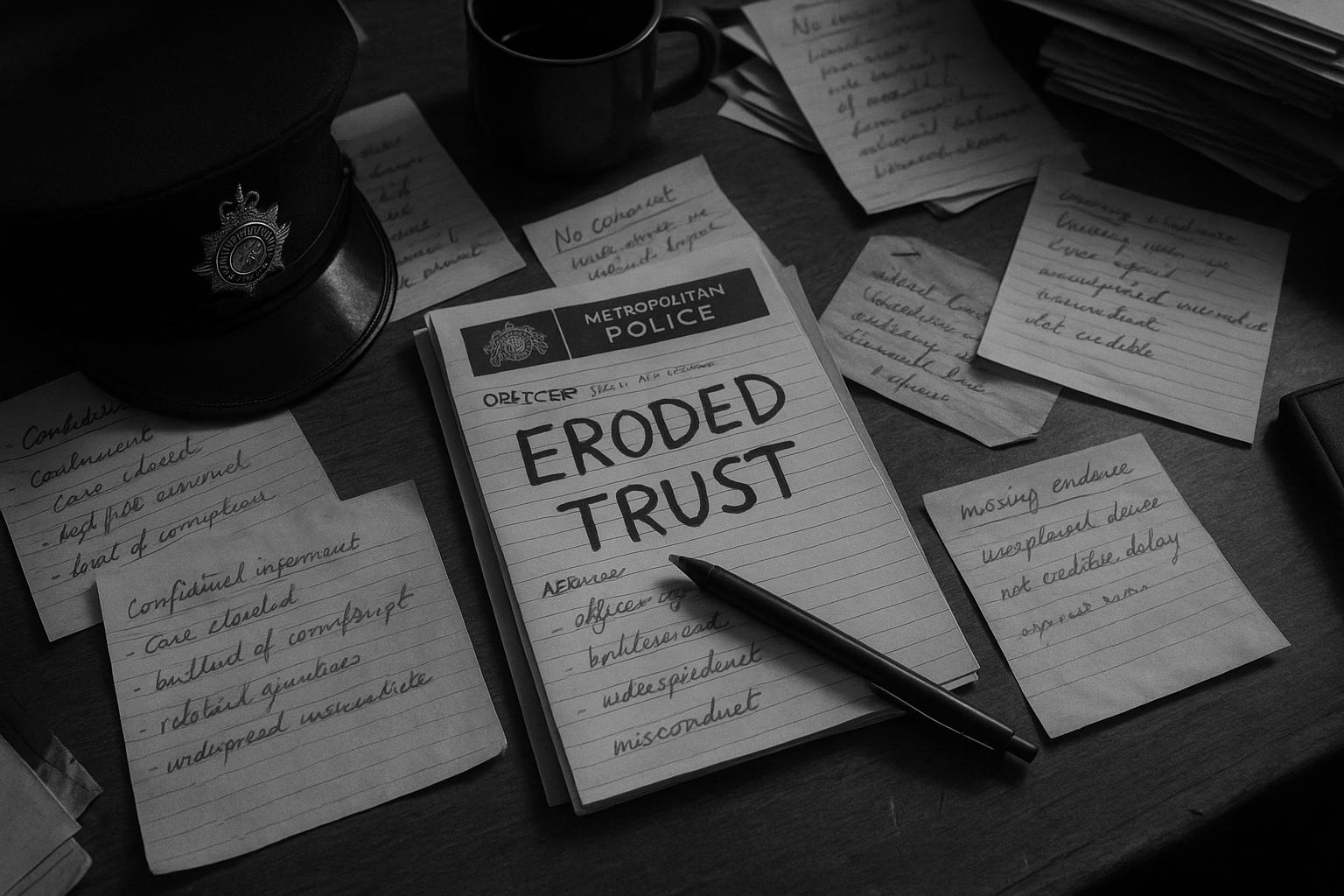In a notable shift, the Metropolitan Police Commissioner, Sir Mark Rowley, acknowledged to the Greater London Assembly (GLA) that the force is grappling with a “very significant” number of historic grooming gang cases across London, marking a clear departure from the Met's previous stance. This admission comes just a day after investigations by MyLondon and the Express highlighted discrepancies in official narratives about the presence and scale of grooming gangs in the capital.
Rowley indicated a “steady flow” of ongoing multi-offender child sexual exploitation investigations in London accompanied by historic cases requiring reinvestigation. However, he cautioned that addressing these cases would demand "many many many millions of pounds" annually over several years, emphasizing the resource challenges involved. The commissioner also stressed the necessity of safeguarding current child protection work, warning against diverting specialists from ongoing cases to historical inquiries without additional funding, as recommended by Baroness Casey’s review.
This evolution in the Met's position appears prompted by the exposure of internal reports and inspections revealing grooming gang activity, contrasting with earlier official denials. Until recently, the force, including Mayor Sadiq Khan, had minimized the extent of the problem. For example, as recently as mid-2024, the Mayor stated he had "no indication" of a large number of cases in London, a position now challenged by government data indicating more than a thousand grooming-related cases nationally, with London believed to hold a significant portion.
Prominent campaigners welcomed the Met's newfound candour, describing it as a "180-degree turn-around." Maggie Oliver, a whistleblower detective famed for exposing grooming gang failures in Rochdale and other northern towns, criticised earlier denials, alleging a cover-up culture within the Met and London's authorities. Speaking to MyLondon, Oliver argued that this belated acknowledgement reflects persistent pressure from victims and advocates revealing systemic failings that protected perpetrators while discrediting victims.
Similarly, social work author Chris Wild emphasised that grooming gangs have been an ongoing, pervasive issue in London. He called for urgent and tangible action to follow the Met’s recognition, underscoring how years of warnings from frontline workers were ignored. Both Oliver and Wild highlight the urgent need for not just apologies but accountability and reform to prevent further abuse.
Further criticism surrounds concerns of misinformation and possible concealment of grooming gang data within the Met. Veteran Scotland Yard detective Bernadette Murray accused the police of deceiving the Mayor and mismanaging vital safeguarding reports, raising questions about transparency and the true scale of exploitation in the city.
Despite the Met’s current commitment to addressing child sexual exploitation, the complexity and scale of the issue remain vast. The force's spokesperson reiterated that grooming in London does not conform neatly to patterns seen in other regions, highlighting the diverse backgrounds involved and the varied nature of criminal activity. Concurrently, the Mayor’s office affirmed continued efforts through initiatives like the £15.6 million Violence and Exploitation Support Service, which supports vulnerable youth and enhances policing approaches to tackle exploitation and county lines crime.
In the wider context, the revelations reflect national concerns sparked by earlier scandals such as Rotherham, where systematic failures let grooming gangs operate unchecked for decades. Lessons from these failures inform the magnified scrutiny on London’s response, pressing for systemic change within policing and social services.
Nevertheless, challenges remain in securing enough funding, resources, and political will to thoroughly investigate and prevent grooming gang crimes while rebuilding trust within affected communities. Sir Mark Rowley’s recent transparency marks a significant, albeit overdue, step towards acknowledging and confronting these deep-rooted issues—one that demands sustained commitment to justice and protection for vulnerable children across London.
📌 Reference Map:
- Paragraph 1 – [1] (MyLondon)
- Paragraph 2 – [1] (MyLondon)
- Paragraph 3 – [1] (MyLondon), [6] (UnHerd)
- Paragraph 4 – [1] (MyLondon), [2] (GB News)
- Paragraph 5 – [1] (MyLondon), [2] (GB News)
- Paragraph 6 – [3] (GB News), [1] (MyLondon)
- Paragraph 7 – [1] (MyLondon), [4] (London.gov.uk)
- Paragraph 8 – [7] (Wikipedia), [1] (MyLondon)
- Paragraph 9 – [1] (MyLondon)
Source: Noah Wire Services
